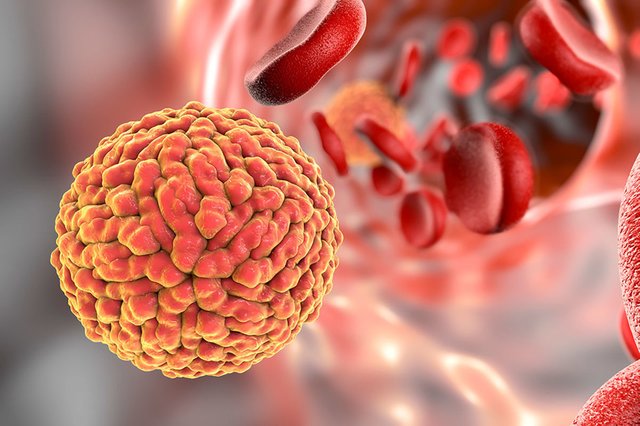How to break through the difficulties of cancer vaccine development?

Cancer vaccines have shown clinical promise in driving tumor-reactive cell activation, proliferation, and effector functions. Cancer vaccine therapy, on the other hand, has not been successful in eradicating tumors and has limited efficacy in some patients. Cancer vaccination has been shown to be ineffective on its own in advanced and metastatic tumors, but it can have a positive clinical impact in the setting of a low tumor load.
What factors limit the effectiveness of a single cancer vaccine? How can more of cancer vaccines' therapeutic potential be realized?
The Parker Institute for Cancer Immunology recently published an online opinion piece in Science Translational Medicine. It examines the future of cancer vaccines from the perspectives of antigenic targets, vaccine platforms, and combination therapies.
Cancer vaccines typically use tumor antigens to elicit a tumor immune response in the body based on T cell cellular immunity. According to their specificity (from low to high), the identified tumor antigens are divided into four major categories: overexpressed tumor-associated antigens, tumor embryonic antigens, tumor testicular antigens, and mutated tumor-specific antigens.
Antigens
To avoid autoimmune responses and central tolerance issues, cancer vaccines should ideally target highly specific tumor antigens, which currently use less specific tumor-associated antigens as core antigenic components rather than tumor-specific antigens. An example is sipuleucel-T, a DC vaccine targeting tumor-associated antigens (TAA), approved by the FDA in 2010 for the treatment of prostate cancer. Such antigens have been largely shown to be safe and immunogenic in clinical trials, but concerns remain about the potential associated autoimmune toxicity associated with development in the form of a vaccine.
NY-ESO-1 and MAGE family proteins are tumor testicular antigens that are not mutated and are expressed in a variety of tumor cells. Cancer vaccines targeting the NY-ESO-1 and MAGE families have shown promise in the clinic, with the potential to avoid inhibitory responses and increase cancer vaccine efficacy with a better understanding of the biology that recognizes these antigens.
RAS and p53 are examples of mutant tumor-specific antigens (TSAs), which activate high-affinity effector T cells but are not usually expressed on tumor cells as conventional antigenic peptide-MHC molecular complexes, making them difficult to use in cancer vaccines. Another type of TSA, which targets virus-driven tumors and includes HPV proteins E6 and E7, has been used successfully in cancer vaccine development.
In addition, neoantigens can increase the specificity of tumor targeting and also stimulate T-cell responses, potentially serving as a more effective antigenic target. In the treatment of melanoma, peptide vaccines, RNA vaccines, and DC vaccines targeting neoantigens have been developed and all have shown safety, feasibility, and strong immunogenicity in clinical trials.
Platforms
Cancer vaccines come in a variety of forms, including nucleic acids, peptides, proteins, and some mixtures (cell or tumor lysates). Dendritic cells (DCs), viral vectors, TLR agonists, pathogen signaling adjuvants, and nanoparticle formulations are currently used to deliver target tumor antigens.
Antigens and adjuvants are frequently used together to stabilize immunogenic molecules and stimulate responses mediated by APCs and T cells. Montanide, cytokines (granulocyte-macrophage colony-stimulating factor), toll-like receptor (TLR) signaling-inducing molecules, CD40 co-stimulatory triggers, and more complex adjuvants are currently used (e.g., viruses).
For example, RNA vaccines (e.g., BioNTech's FixVac) are now a viable vaccine platform composed of RNA molecules packaged into lipid nanoparticles to optimize delivery and immunostimulatory properties. However, the signaling mechanism is not fully understood, and optimal adjuvants paired with specific antigenic platforms are still required to maximize favorable immune responses.
Combined therapy
To improve T-cell activation and anti-tumor activity, a combination of immunotherapy and standard treatment approaches is being used to address the limited therapeutic efficacy of cancer vaccines in the clinic.
Many combination therapies, including immune checkpoint inhibitors CTLA-4 or PD-(L)1, T-cell therapy, low-dose IL-2, IFN-, and chemotherapy, have been tested clinically with some degree of efficacy improvement for DC vaccines.
The HPV16 synthetic long peptide vaccine demonstrated early clinical success in patients with early-stage cervical cancer, but it did not produce the same efficacy in patients with advanced disease, which could be improved by combining cisplatin chemotherapy and immune checkpoints to enhance its antitumor effect. The timing and sequence of vaccine administration is a critical issue in combination therapy. Cancer vaccines are more effective when administered before checkpoint inhibitors than after them, according to studies in mice, and this finding is supported by clinical data.
FixVac, an intravenous liposomal mRNA vaccine, can target multiple antigens alone or in combination with PD-1 inhibitors. FixVac induces long-term objective remissions in melanoma patients who have not responded to checkpoint inhibitors. It can be given multiple times and still produce an improved response.
Cancer vaccines are a comparable and safe oncology treatment, but strategies for optimizing each component are still being developed. Understanding the mechanisms by which cancer vaccines induce effective responses and optimizing treatment regimens will be critical for cancer vaccine success in the future.
Learn more: https://www.creative-biolabs.com/vaccine/mrna-vaccine-platform.htm